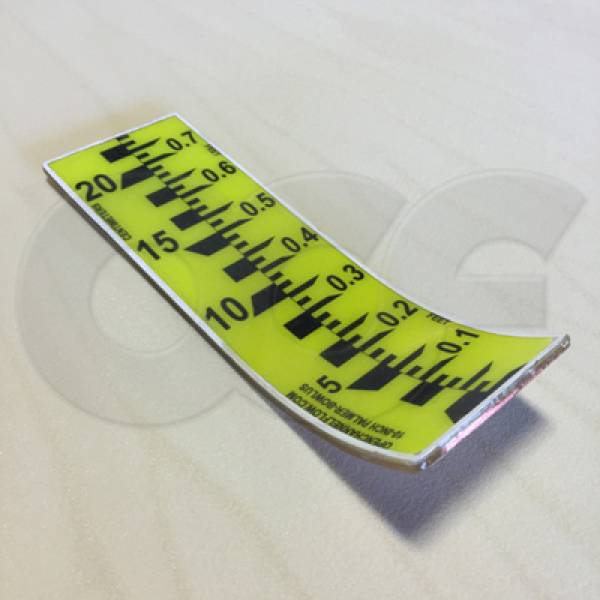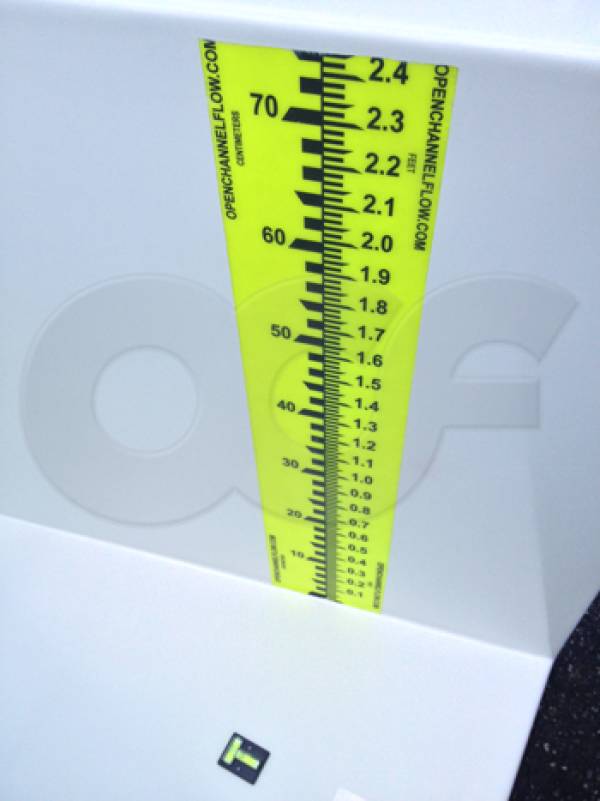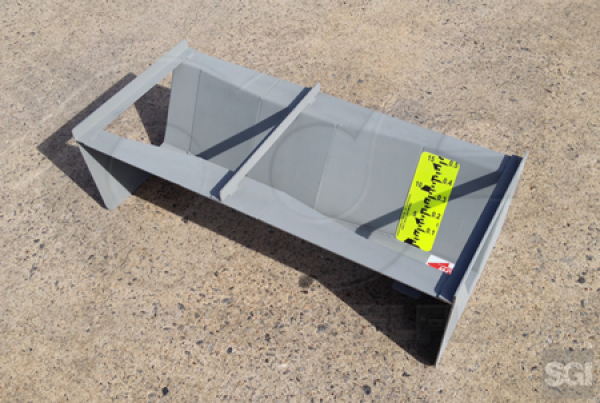This website uses a variety of cookies, which you consent to if you continue to use this site. You can read our Privacy Policy for
details about how these cookies are used, and to grant or withdraw your consent for certain types of cookies.
Adhesive Staff Gauges
There are three general types of Staff Gauges used to measure flow in primary devices: molded-in, adhesive, and rigid. Of the three, the adhesive gauge is the least durable. This is not to say, however, that adhesive gauges do not serve a purpose, only that there are limitations to the gauge type.
To compare adhesive gauges with the two other gauge types, consider their construction and application.
Molded-in Gauges
Molded-in gauges are usually printed on paper or – better yet –on a vinyl substrate with a sealant top coat. The gauge is then molded into the fiberglass primary device (flume or weir) at the time of construction – with a UV inhibited clear gel coat (reinforced by surfacing veil) covering the gauge and backed by the bulk laminate. As the molded-in gauge is, well, molded-in, it does not extend into the flow stream but they do have to part of the initial device construction - only only fiberglass construction at that.
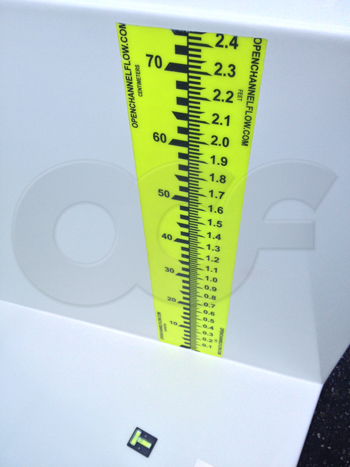
Rigid Gauges
Rigid gauges can be porcelain enameled iron, stainless steel, or some other permanent material. The gauge bolted or screwed into place and extends into the flow stream but can be added after the device is in place - sometimes without flow being stopped. Rigid gauges can be applied to non-fiberglass primary devices.
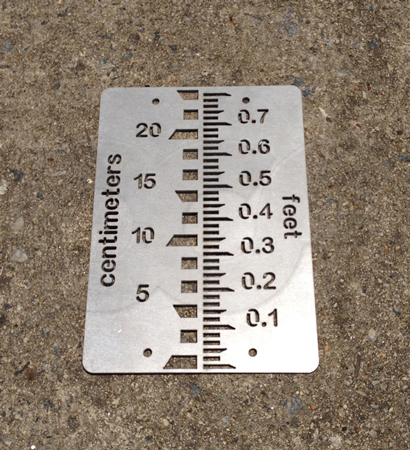
Adhesive Gauges
Finally, adhesive gauges are typically printed on a vinyl substrate with an adhesive backing and topped with a DFA or polycarbonate top coat. The adhesive gauge is applied by pealing off the protecting cover on the adhesive backing and then pushed into place. Adhesive gauges can be applied to non-fiberglass devices, but can only be applied when no flow is present.
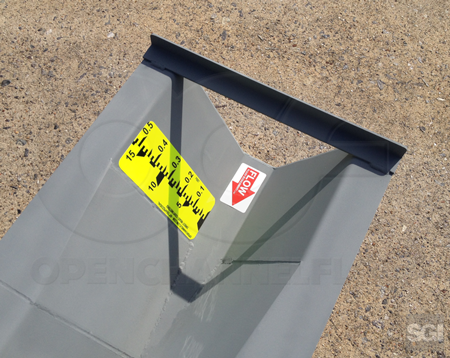
Surface contamination (dust – most common, dirt, chemicals, etc.) can impair the gauge’s ability to bond to the mounting surface. It is critically important, then, that the application surface be thoroughly wiped down and clean. Additionally, all of the edges of the gauge must be completely pressed down to the mounting surface so that water does not get behind the gauge. Care must also be taken in applying the adhesive gauge to ensure that air is not trapped between the gauge and the mounting surface.
As the gauge is mounted on the surface of the primary device, the edge of the gauge extends into the flow stream – any area of poor adhesion or incomplete application can result in water getting between the gauge and the device – eventually working the gauge loose.
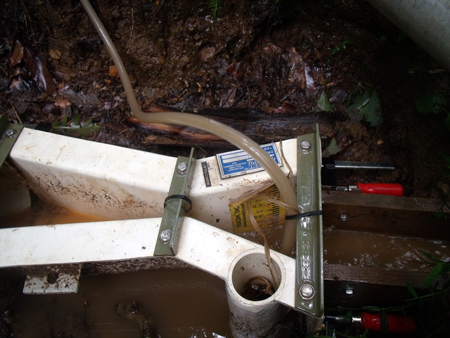
Image: Virginia Tech
Related Blog Posts
Explore more insights in our blog.

LOCATIONS IN ATLANTA, GA & BOISE, ID


